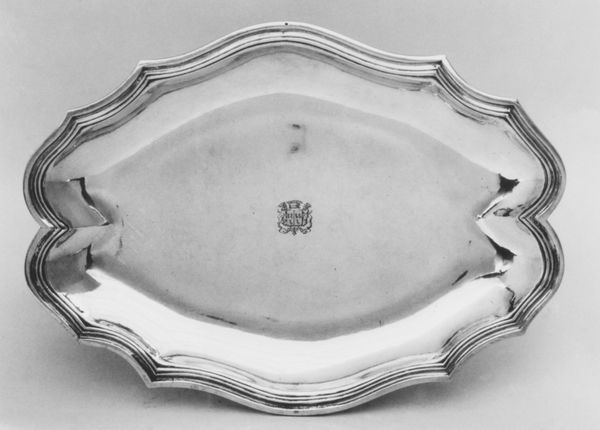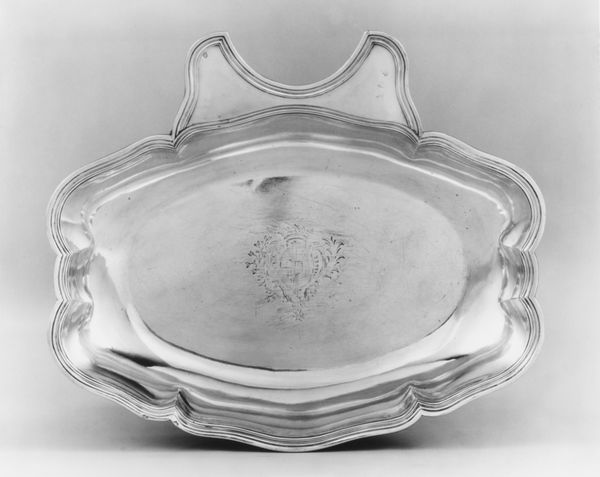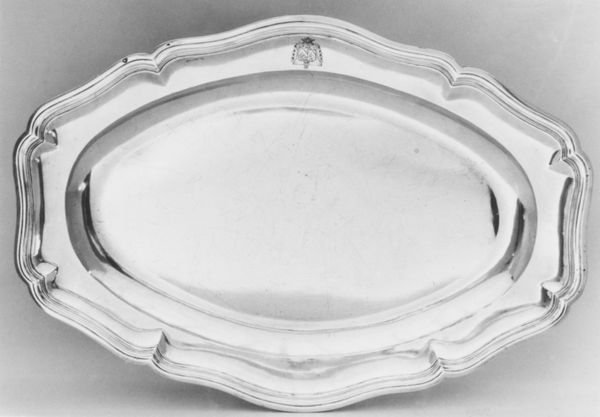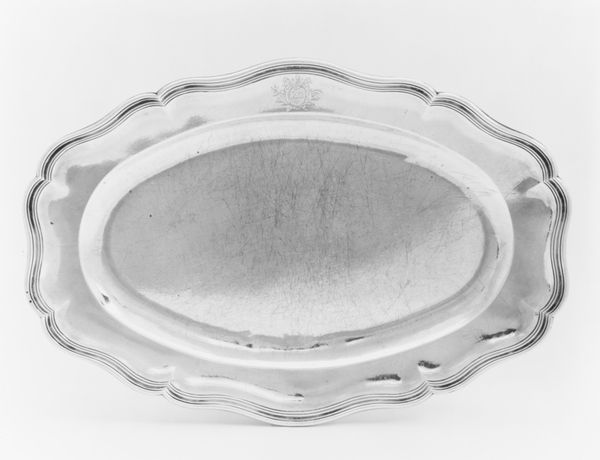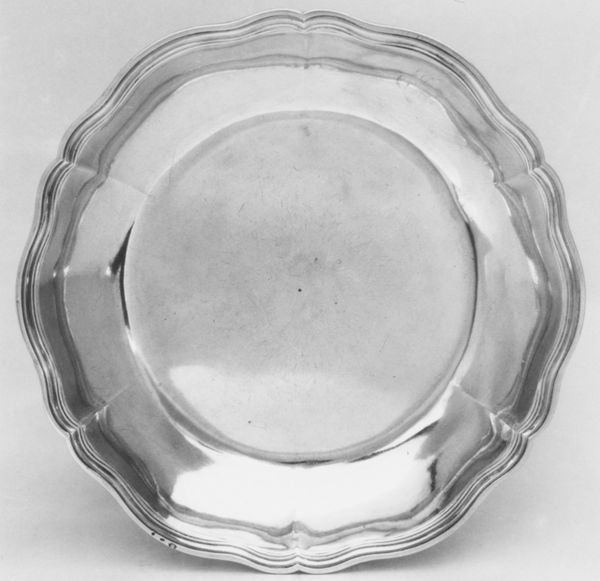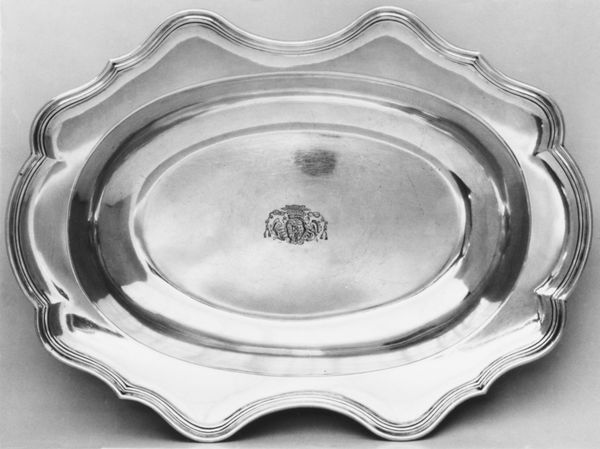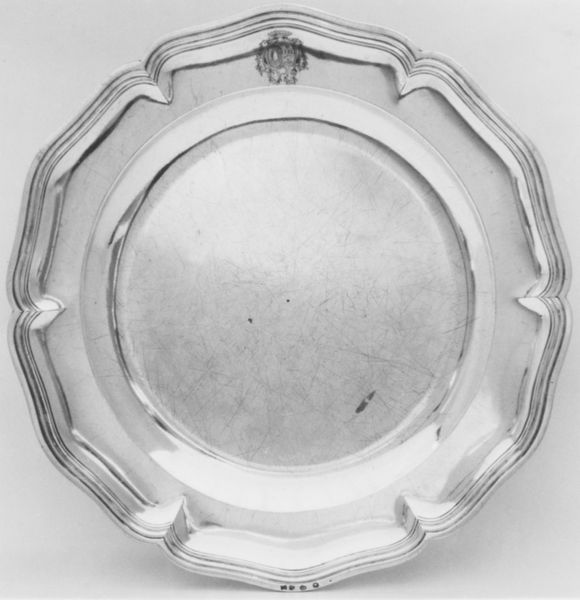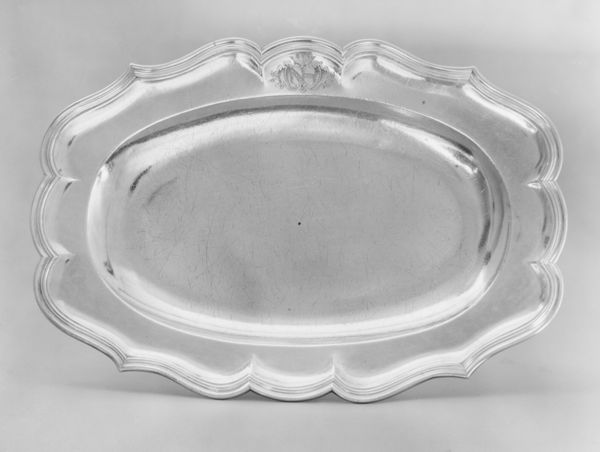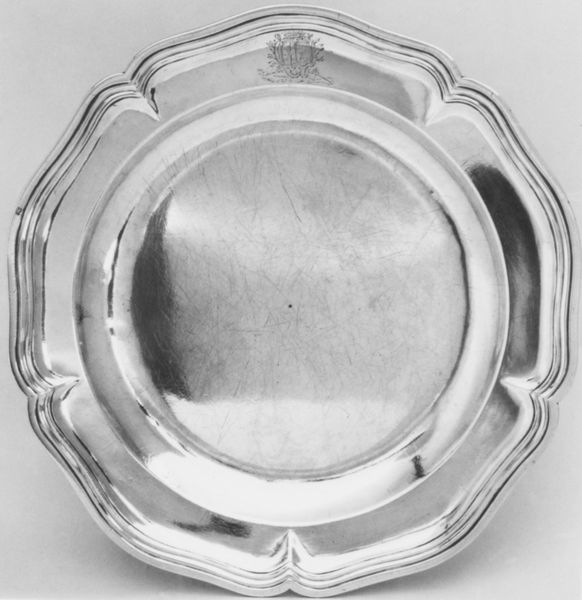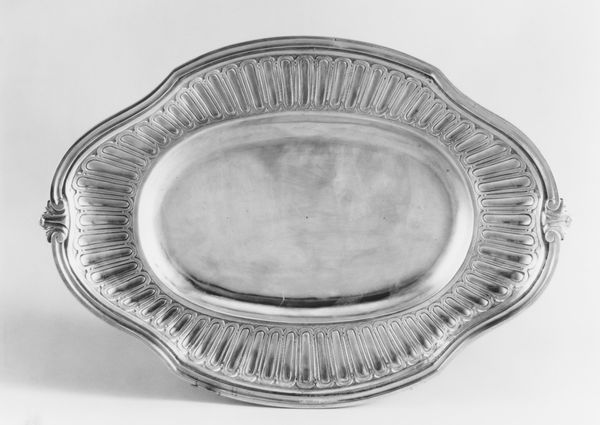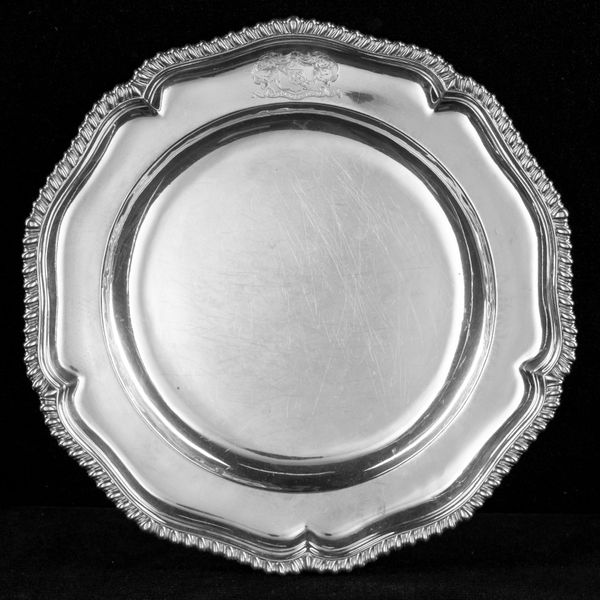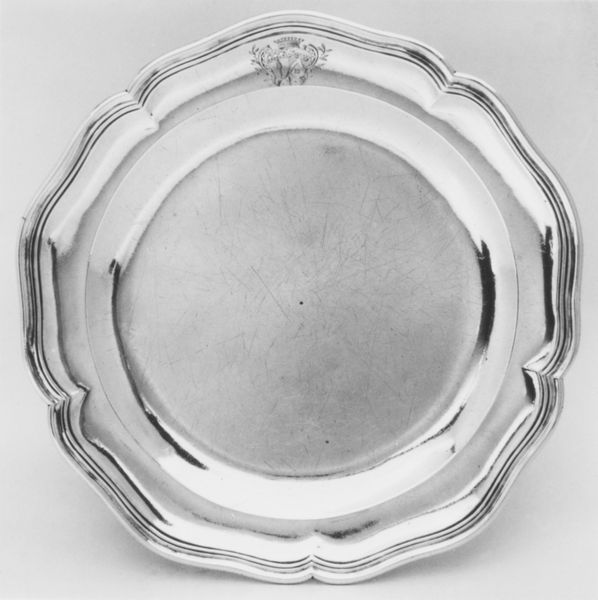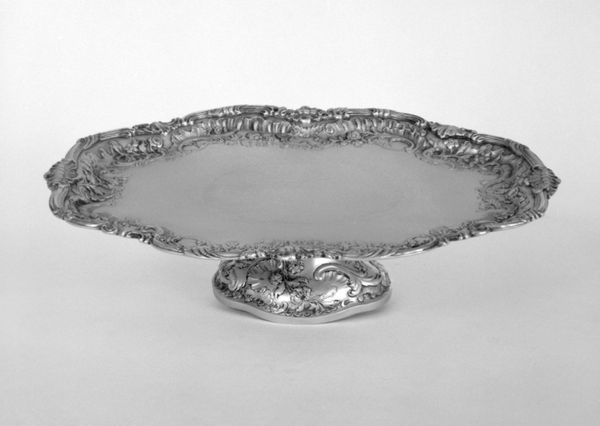
silver, metal, sculpture
#
silver
#
baroque
#
metal
#
sculpture
#
sculpture
#
decorative-art
#
rococo
Dimensions: Overall: 1 3/8 × 9 1/2 × 13 1/16 in. (3.5 × 24.1 × 33.2 cm)
Copyright: Public Domain
This silver dish was created by François-Thomas Germain in France, a country where culinary display was elevated to high art. Silverware like this wasn't just functional; it was a potent symbol of status and power. Germain, as a goldsmith to the King, catered to an elite circle where dining was a theatrical performance. The undulating edges and gleaming surface of the dish reflect the Rococo style, favored by the French aristocracy. This aesthetic movement moved away from the solemnity of the preceding Baroque. Consider the social conditions that allowed for such luxury. France’s colonial wealth, labor exploitation, and rigid class structure underpinned the lavish lifestyle of the court. Objects like this dish, therefore, weren't innocent aesthetic creations but rather material expressions of a deeply unequal society. Historians use inventories, guild records, and patronage details to decode the cultural meanings embedded in such objects. By examining these resources, we reveal the intricate web of social relations and economic forces that shaped artistic production.
Comments
No comments
Be the first to comment and join the conversation on the ultimate creative platform.
